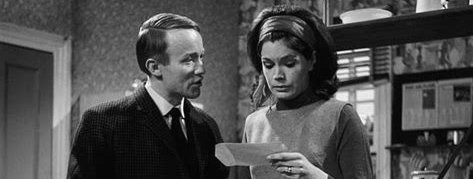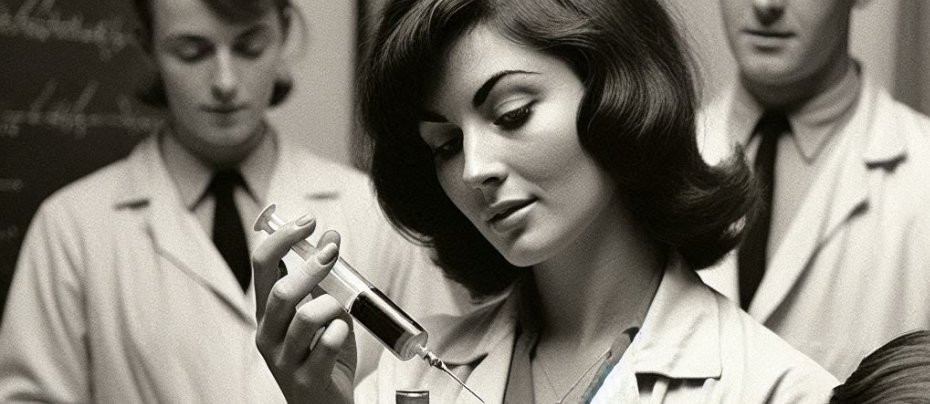
Pathfinders In Space
"The dangers that face this unlikely crew are largely based on scientifically plausible events."
Pathfinders in Space is the second of four serials that made up what is commonly known as the Pathfinders Trilogy. The odd misnomer relates to the fact that the three serials under the Pathfinder title follow on from an initial story, Target Luna, which is now long lost and thus less well-remembered. Target Lunawas a children's adventure series with an educational slant, concerned with real life scientific issues, in particular the Space Race that was hotting up in 1960. The successive Pathfinders stories allowed for more speculative subject matter, but retained their child-friendly mix of education and adventure. Pathfinders in Space takes us, over the course of seven episodes, beyond the safety of the Earth and to the Moon, and the mysteries located there.
The Pathfinders serials are linked to Doctor Whothrough their producer, Sydney Newman, who would go on to be instrumental in the creation of the long-running BBC series. Another link is Malcolm Hulke, who co-wrote all four serials in the Pathfinders canon with Eric Plaice. The Incredible Hulke, as his fans sometimes like to call him, wrote a number of very well regarded scripts for Doctor Who between 1967 and 1974, for the second and third Doctors. Newman later described Pathfinders as a "precursor to Doctor Who," and there are certainly similarities. The educational remit of the Pathfinders stories was also found in the earliest Doctor Whoserials, utilising adventure storytelling to teach children scientific concepts (and in Doctor Who's case, history). The filming style is not unlike much of Doctor Who's early episodes, although this is as much an artefact of the time of its production as anything. Many British productions of this era, particularly lower budget ones such as these, have the feel of a broadcast stageplay, in contrast to the more filmic nature of the higher end US series. As with Doctor Who, Pathfinders was intended for a children's audience, with enough appeal for any adults watching with them.
Nonetheless, there are more significant similarities, at least in the first two serials, with the Quatermass serials of the 1950s. Both Target Luna and Pathfinders in Spaceare concerned heavily with the practicalities of manned space travel and the discoveries it may lead us to, with noble English scientists and everyman journalists leading the way. This is familiar to anyone who has seen the first two Quatermass serials. Pathfinders in Space, in particular, has echoes of the then-recent Quatermass and the Pit, the third of Nigel Kneale's sci-fi serials. In both serials, the intrepid scientists and their assistants uncover a spacecraft, impossibly buried beneath the ground (on Earth in Quatermass, on the Moon in Pathfinders). In both cases, the discovery sheds light on the prehistory of life on Earth, although in rather different ways. Of course, there are significant differences in tone. Quatermass was a very adult production, with an overt horror ethos and a pessimistic outlook. Pathfinders, targeted at a younger audience, is altogether more hopeful and is concerned with the wonders of the universe, not its terrors. Still, there is a sense in which Pathfinders can be viewed as a children's Quatermass substitute. Even the music, taken from the Chappell music library, has a bombastic classical style that brings the Quatermass serials to mind.

Without Target Luna as its first half, Pathfinders in Spacedoes seem to begin rather abruptly, with the viewer expected to be familiar with the principle characters. That said, even viewers at the time would have been briefly wrongfooted. In the four months since the broadcast of the first serial, all the major roles had been recast. Nonetheless, the main characters are easily understandable ad stock types of adventure fiction, and science fiction in particular. Professor Norman Wedgwood (Peter Williams) is a stiff-upper-lipped English scientist, accompanied in his preparations by his three children. Geoff, Valerie and Jimmy - played by Stewart Guidotti, Gillian Ferguson and Richard Dean - are precisely the sort of characters we would expect to find in this set-up. They are beyond precocious, well-spoken and enthusiastic. They dote on their father, and share a good-natured rivalry amongst themselves. Richard Dean is of particular note, playing a child of around ten years of age, despite being fifteen years old. The actor's small stature made him particularly sought after for such roles. Completing the core group is Conway Henderson, played by Gerald Flood. Another professional with a link to Doctor Who, Flood would go on to play the robotic companion Kamelion alongside Peter Davison's Doctor over twenty years later. Conway is a journalist of the classic cut, ever eager for a scoop but nonetheless upright and helpful in a crisis, and very much the hero of the piece.
Other characters had more minor roles, primarily part of the support crew back on Earth, vital for reporting on the severity of the situation once the main characters had left for the Moon. Of particular note is Irene Sutcliffe, later famous in Britain as Maggie Clegg in Coronation Street. Another recast, Sutcliffe played computer operator Jean Cary. The smallest role, but one of the most memorable, is that of Hamlet - Jimmy's pet Guinea pig. Hamlet seems to accompany little Jimmy everywhere he goes, and I do mean everywhere, becoming as he does the first rodent on the Moon. In perhaps the most radical example of recasting, the Guinea pig replaced an earlier hamster, supposedly for better visibility onscreen. The mystery of Hamlet's changing species remains unresolved in the storyline.
Allusions to the previous serial make it clear that this is but one step in an ongoing programme of lunar missions, based in the Home Counties. A central theme of the earlier two serials in the Pathfindersseries is the dangers inherent in space travel, and the ingenuity required to overcome them. As such, while Moon Rocket One is launched without difficulty, the failure of the supply-carrying Moon Rocket Two threatens to doom Professor Wedgwood. It is then up to Conway, along with the three Wedgwood children, with Hamlet along for good measure, to board and pilot MR2 and save the Professor. While it may seem highly unlikely that these four are the best hope for saving the valiant scientist, they press on with their foolhardy mission, rendezvousing with Wedgwood on the Moon.

The dangers that face this unlikely crew are largely based on scientifically plausible events. For instance, the major threat to their returning to Earth is a sudden meteorite shower, for which the airless Moon provides no barrier. MR1 is destroyed, and the carefully calculated capacity of MR2 cannot support everyone for the trip home. However, the Moon holds far more intriguing and speculative discoveries. Falling through a rift in the lunar surface into an underground cavern, Jimmy finds the perfectly preserved remains of an alien spacecraft. Investigation of the ship and its cavern naturally take priority over the previous mission goals. The gradual piecing together of the nature of the alien pilots is a highlight of the serial, taking away from the more grounded real-world science of the first story and allowing a flight of imagination. Gratifyingly, efforts are made to keep the slow process of lunar archaeology diverting for children. While there is some conversation on the nature of mathematics as a universal language - an approach used in genuine attempts at extraterrestrial communication - more relatable elements are used as well. The kids even find bizarrely shaped stuffed toys, hinting that the crew of the alien ship was a family, just like the Wedgwoods. In a quite unique development, the aliens turn out not to be from the stars, but from the Earth itself, predating the modern biosphere by hundreds of millions of years. It's fascinating stuff, even if the palaeontological side of things is hugely oversimplified (to say nothing of the absurd suggestion that trilobites are the ancestors of all modern life).
Pathfinders in Space is a charming look at a very British idea of space travel in the days before it became a reality. A slow, thoughtful adventure, child-oriented but with some intelligent ideas, it was a step towards popular television science fiction such as Doctor Who and Out of the Unknown that would be so successful throughout the sixties. Before that, however, would be two further Pathfinders missions, even further out into the universe and into imagination.
Published on February 21st, 2019. Written by Daniel Tessier (January 2014) for Television Heaven.










